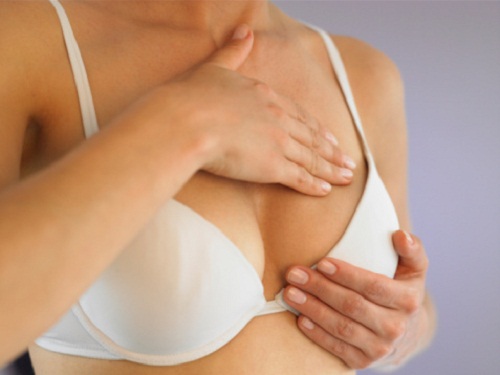Breast Tenderness: Causes and Effective Treatment Options

Some women who experience tenderness in one of their breasts become alarmed, fearing they may have breast cancer.
However, breast tenderness isn’t a sign of cancer. Rather, there are various possible causes.
Causes of breast tenderness
Breast tenderness in some cases is very normal. The pain and discomfort can be the result of different hormonal changes, such as:
Puberty
Pain and discomfort in the breasts can occur in young women whose new mammary tissue and fluctuating hormones are still in development.
The pain can be sporadic or continuous, and usually goes away once the breasts stop growing and the hormones stabilize.
Menstrual cycle
During a woman’s period, she’ll likely experience a certain level of tenderness in the breasts.
Menstruation is a time in which your body produces more estrogen, which reaches its maximum level halfway through your cycle.

Pregnancy
Pregnancy is a time when women can experience a lot of breast tenderness, especially if they’re young or this is their first pregnancy.
This is all very normal, since breasts actually increase in size during pregnancy.
Pregnant women may also notice bluish colored veins in their breasts during pregnancy due to increased blood flow.
Breastfeeding
Pain and tenderness can also come after a woman gives birth to her child. This pain can appear not only during moments when the mother is breastfeeding her baby, but also when she is not.
This is because the breasts can become congested with built up milk. If the pain doesn’t go away, it may be a sign of mastitis.
Mastitis
It’s common for women who are breastfeeding to experience mastitis at some point or another. Mastitis occurs when breast milk doesn’t flow correctly and builds up in the breasts.
In some cases, it’s an infection caused by a virus or fungus. The infected breast often becomes red, warm, and painfully engorged.
Medication
In some women, certain medications may produce breast tenderness as a side effect.
Birth control pills and hormone replacement treatments are two examples, as they alter the amount of progesterone and estrogen in a woman’s body.
Breast cysts
Breast cysts are small sacks that form inside the breast and fill up with liquid. They tend to appear when mammary glands increase in size.
Smaller cysts require mammograms or ultrasounds to be detected, and in most cases they’re benign. However, larger cysts can be detected through a manual breast exam.
Abscesses in the breasts
Abscesses occur as a result of pus accumulated in breast tissue and can produce pain and tenderness.
Upon doing a self breast exam, women may feel small lumps caused mainly by bacteria that enter through cracks in their nipples.
If you suffer from breast abscesses, then it’s important to see your doctor to carry out the proper examination.

Incorrect bra wearing
Many women overlook the role of their bras in breast tenderness. Most women don’t know their exact measurements or how to choose the correct bra, and end up buying the wrong size.
That’s why, when purchasing a new bra, it’s important to find out your true size in order to prevent back pain and breast tenderness.
Treatment for breast pain and discomfort
There are several treatment options for breast tenderness, which include the following:
- Apply cold compresses to the breast: This can help bring down swelling and reduce pain.
- Apply warmth to the breast: Warmth will help you relax and also aid in relieving the pain.
- Limit or avoid caffeine, as this can be the culprit behind your discomfort.
- Take vitamins E, B6 and iodine: These supplements can help you fight against breast tenderness and any other pain.
- In cases of strong pain, you can take pain killers like aspirin, ibuprofen and Tylenol.
- Avoid bras that squeeze your breasts. If you use bras that provide the correct support, you’ll find the relief you’re looking for.
Once again, breast tenderness is something very common among women, and there are multiple causes.
There are several treatment options that you can try in order to find out which one works for you.
Remember, if the discomfort doesn’t go away, or it affects your daily life, see a doctor. A specialist will carry out the necessary exams and indicate proper treatment.
This text is provided for informational purposes only and does not replace consultation with a professional. If in doubt, consult your specialist.








